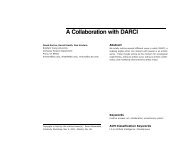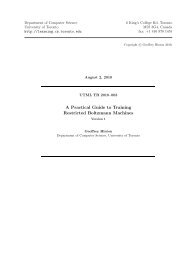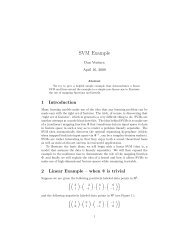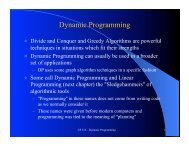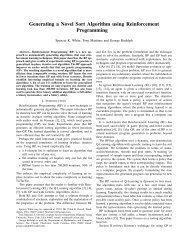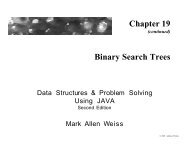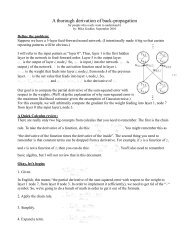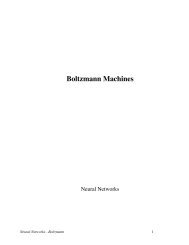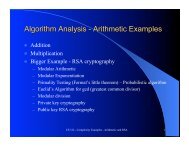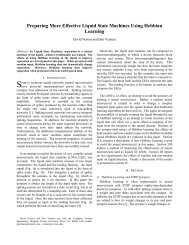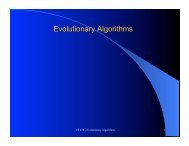A Bradley-Terry Artificial Neural Network Model for Individual ...
A Bradley-Terry Artificial Neural Network Model for Individual ...
A Bradley-Terry Artificial Neural Network Model for Individual ...
You also want an ePaper? Increase the reach of your titles
YUMPU automatically turns print PDFs into web optimized ePapers that Google loves.
16 Joshua Menke, Tony Martinez<br />
at will during the play of the given map. These are common characteristics<br />
of public Enemy Territory servers and are the reasons the above extensions<br />
were developed. Weighting individuals by time deals with players coming,<br />
going, and changing teams. Incorporating a team size-based “home field advantage”<br />
extension deals with both the uneven numbers and the difference<br />
in difficulty <strong>for</strong> either team on a given map. The certainty parameter was<br />
developed to deal with inflated probability estimates given several new and<br />
not fully tested players. Since it is common practice <strong>for</strong> a server to drop a<br />
player’s rating in<strong>for</strong>mation if they do not play on the server <strong>for</strong> an extended<br />
period of time, no decay in the player’s certainty was deemed necessary.<br />
The model was developed to predict the outcome <strong>for</strong> a given set of teams<br />
playing a macth on a given map. There<strong>for</strong>e, the individual and field-group<br />
parameters (in this case both an Axis and Allies parameter <strong>for</strong> each map)<br />
are updated after the winner is declared <strong>for</strong> each match.<br />
In addition, the model was developed <strong>for</strong> use on public Enemy Territory<br />
servers where a large number of individuals come and go and a single individual<br />
will never eventually see all of the other possible individuals throughout<br />
all of the maps they participate in. In fact, it is common <strong>for</strong> individuals that<br />
play very often to never play together (on either team) because of issues<br />
like time zones. There<strong>for</strong>e, the primary assumption in the method to fit<br />
proposed by (Huang et al., 2005) is not met.<br />
In order to evaluate the effectiveness of the model, its extensions, and<br />
training method, data was collected from 3,379 competitions including 4,249



